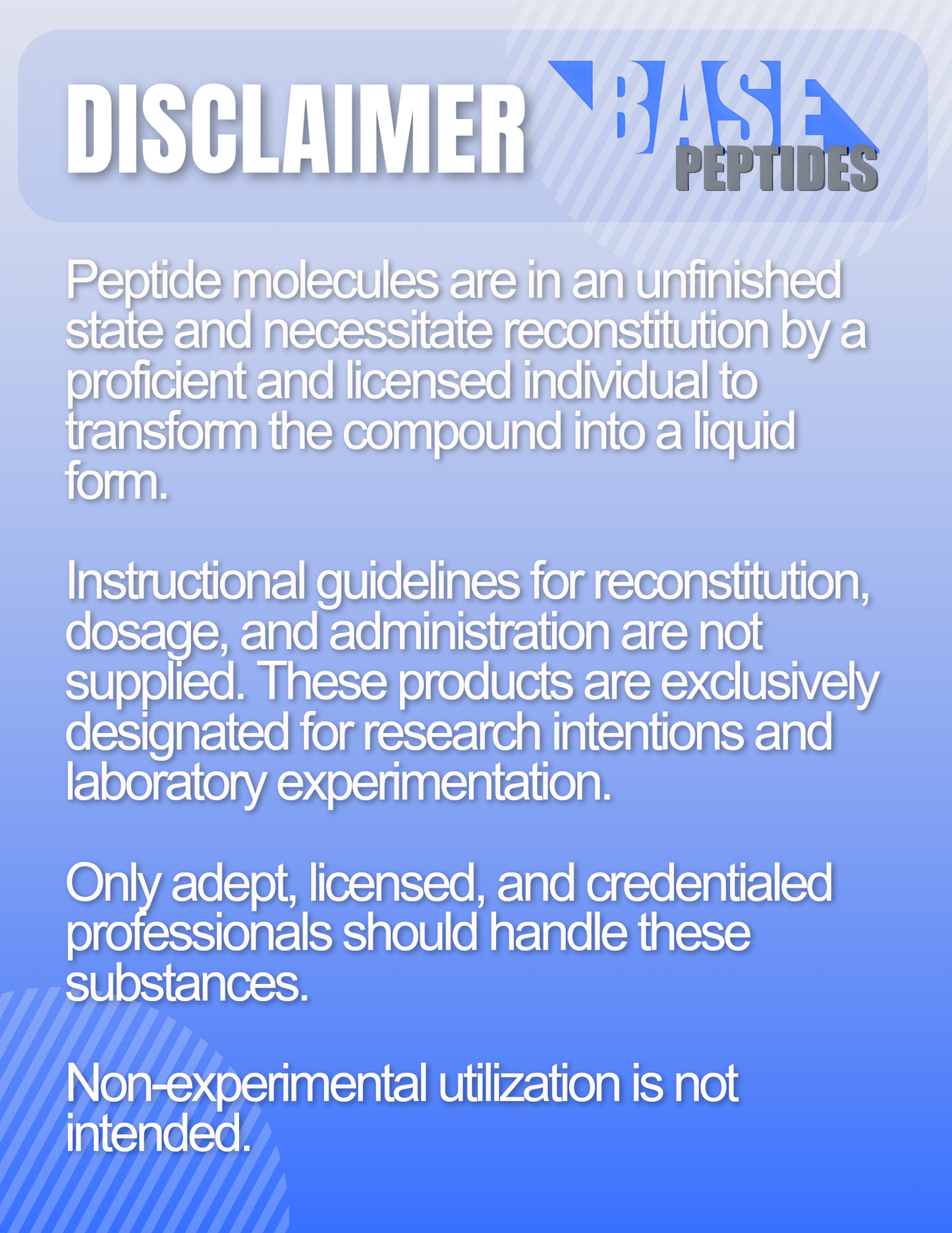SEMA
SEMA
Base Peptides are intended for licensed medical professionals and experienced researchers. Reconstitution required. Dosing and use instructions are not provided.
Couldn't load pickup availability
Semaglutide — GLP-1 Receptor Analogue for Metabolic Research
Semaglutide is a long-acting peptide analogue of glucagon-like peptide-1 (GLP-1), a natural hormone that helps regulate appetite, glucose levels, and energy balance. In research, it’s used to study insulin secretion, satiety pathways, and body-composition shifts in metabolic and endocrine models.
- CAS: 910463-68-2
- PubChem CID: 56843331
- Formula / MW: C187H291N45O59 · ≈ 4113 Da
- Sequence: Modified GLP-1(7–37) analogue with substitutions for stability and albumin binding
- Semaglutide mimics the body’s own GLP-1 hormone, which is released after meals.
- It binds to GLP-1 receptors in the pancreas and brain to support insulin release, slower gastric emptying, and a natural sense of fullness.
- In research models, this helps explore metabolic efficiency, appetite signaling, and glucose control mechanisms.
- To study GLP-1 receptor signaling in glucose and lipid metabolism.
- To evaluate appetite and energy-expenditure pathways.
- To model long-acting incretin analogues and their tissue effects.
Key Studies — What Was Tested, What Changed, Why It Matters
Glucose regulation and insulin response models
- What was tested: Semaglutide’s impact on fasting and post-meal glucose in both animal and human studies.
- What changed: Clear improvements in insulin sensitivity and glucose tolerance with fewer glucose spikes after feeding.
- Why it matters: Demonstrates how GLP-1 receptor activation helps fine-tune insulin secretion and reduce metabolic stress in pancreatic-cell research.
Appetite and energy-intake studies
- What was tested: Central and peripheral GLP-1 receptor activation related to food intake and satiety signaling.
- What changed: Research consistently shows reduced caloric intake and delayed gastric emptying, with activation of appetite-regulation centers in the brainstem and hypothalamus.
- Why it matters: Provides a model to study the brain-gut axis and its role in body-weight regulation.
Body-composition and lipid studies
- What was tested: Effects of prolonged GLP-1 activation on fat and lean-mass distribution.
- What changed: Consistent findings of visceral fat reduction and improved lipid markers (triglycerides and cholesterol fractions) over time.
- Why it matters: Offers insight into how incretin pathways influence long-term metabolic remodeling beyond glucose alone.
Potential Research Applications
Metabolic Function
- Glucose tolerance and insulin-release studies
- Pancreatic β-cell and incretin assays
Appetite & Satiety Models
- Neuro-endocrine signaling and food-intake research
- Gastric-emptying kinetics and brain-gut axis studies
Body-Composition Research
- Fat-mass, lean-mass, and lipid-panel tracking
- Visceral adiposity imaging and metabolic flexibility
Synergistic Peptides (for Study Design)
Tirzepatide
- Why pair: Dual GLP-1 and GIP receptor agonist, allowing comparison between single-pathway vs dual-pathway incretin signaling.
- Angle: Combined analysis of insulin sensitivity, appetite control, and adipose signaling.
AOD-9604
- Why pair: Fragment of GH used in studies of fat metabolism and energy mobilization.
- Angle: Pairing with semaglutide offers insight into adipose and mitochondrial activity under dual stimulation.
CJC-1295 (with DAC)
- Why pair: Explores metabolic and hormonal cross-talk between GH/IGF-1 and GLP-1 axes.
- Angle: Long-term metabolic experiments tracking lipid and glucose markers.
Design Notes
- Clearly separate single vs combination peptide arms.
- Track food-intake timing, fasting glucose, and body-composition data points.
- Document all formulation details—GLP-1 analogues are sensitive to pH and light.
Known Concerns (Context)
- Stability: Semaglutide is temperature- and light-sensitive—store frozen and handle gently.
- Model design: Appetite and glucose markers can fluctuate with stress and feeding schedules; control environmental variables tightly.
- General: For research use only; not for therapeutic or human consumption purposes.
Follow institutional SOPs for metabolic and endocrinology peptide handling.
Specifications & Handling
- Form: Lyophilized powder (lot-coded)
- Purity: ≥ 99 % (HPLC/MS verified)
- Storage: ≤ −20 °C; protect from light/moisture
- In solution: Aliquot; avoid repeat freeze–thaw
- Additives: None unless specified per lot
- Packaging: Tamper-evident; research-only labeling
Regulatory & Use Notice
Sold for laboratory research use only. Not for human consumption, medical, or veterinary use. No human-use instructions are provided. Buyer is responsible for safe handling and regulatory compliance.
Semaglutide Peptide Research | GLP-1 Receptor Analogue | Metabolic, Appetite & Glucose Studies




